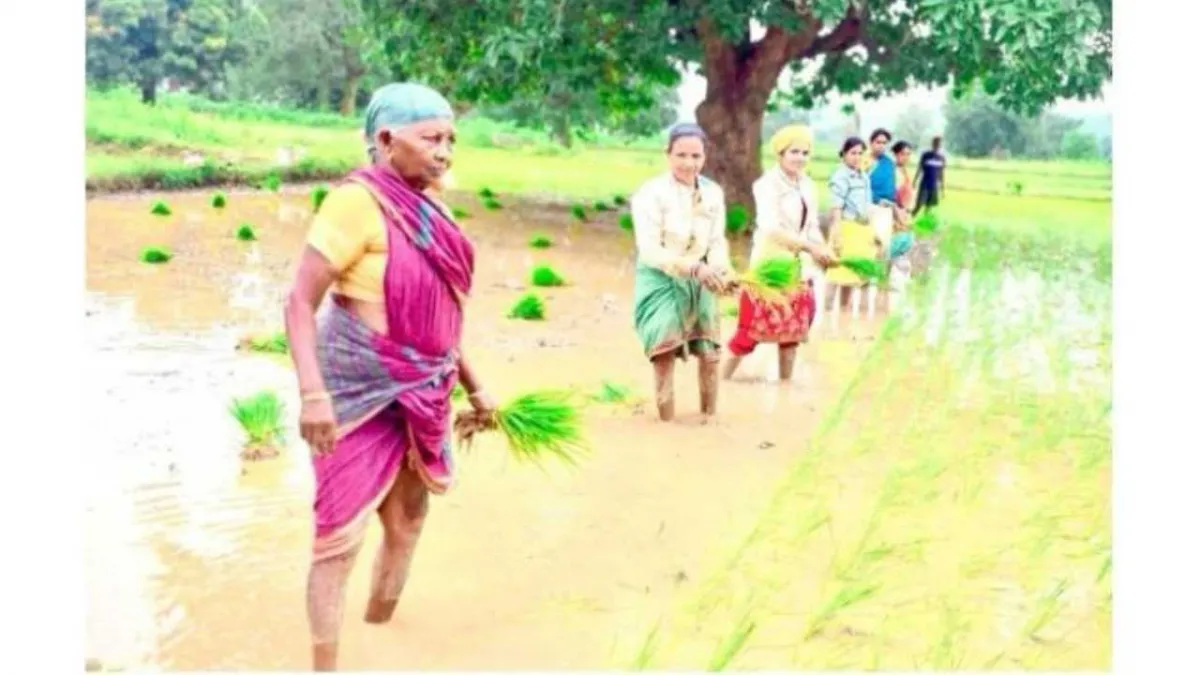Bhubaneswar: India’s largest aluminum producer, Vedanta Aluminum, has promoted the System of Rice Intensification (SRI) method through its integrated watershed and livelihood development initiative ‘Project Sangam’ in Lanjigarh, Kalahandi, transforming traditional farming practices.
This technique has resulted in a 25% increase in crop production, a 30% reduction in input costs, and a significant rise in farmers’ income. So far, over 60 farmers have adopted this method on 64.2 acres of land.
Whereas Kalahandi district was once known for drought and famine, today, due to Vedanta’s agricultural and sustainable livelihood initiatives, farmers are achieving higher yields and income.
The company is now expanding it to 210 acres of land in the current Kharif season, involving over 120 farmers from 18 villages.
The success of SRI under Project Sangam demonstrates how community innovation can increase productivity, conserve resources, and improve livelihoods. It aligns with our goal of building a self-reliant India.
Farmers also highlight the success of this initiative, noting that planting at proper distances has led to uniform crop growth, more tillers, better weed control with mandua weeder, reduced seed requirement, and stronger plant roots. Especially small and marginal farmers appear more aware and eager to adopt this method in the long term.
Vedanta’s Project Sangam in Lanjigarh
This is an integrated watershed and livelihood project that enhances the livelihoods of rural communities through technology-based solutions. The project aims to create water-based assets in 41 villages of Lanjigarh block in Kalahandi district, ensuring year-round availability of drinking water and water for agriculture.
Under this project, irrigation facilities have reached over 3,500 acres of land, benefiting more than 22,000 people year-round while increasing water storage capacity and groundwater recharge rates.
Vedanta Aluminum
Vedanta Aluminum is not a specific place or cultural site but rather a major Indian metals and mining company, part of the Vedanta Resources Limited group. It operates large-scale aluminum production facilities, primarily in Odisha, India, with its history rooted in the country’s industrial development and natural resource extraction since the early 21st century.
System of Rice Intensification (SRI)
The System of Rice Intensification (SRI) is a farming methodology, not a physical place, that was developed in Madagascar during the 1980s. It is a set of agroecological practices that change the management of plants, soil, water, and nutrients to increase rice productivity. The method challenges conventional rice farming by using fewer seeds and less water, while promoting healthier root systems and soil biology.
Project Sangam
I am not familiar with a cultural or historical site named “Project Sangam.” This term may refer to a modern initiative or a local project rather than an established heritage site. For an accurate summary, please verify the name or provide more context about its location or purpose.
Lanjigarh
Lanjigarh is a town in the Kalahandi district of Odisha, India, historically known as the capital of the princely state of Kalahandi. It is most widely recognized today for the controversial Vedanta alumina refinery and its proximity to the Niyamgiri Hills, which are considered sacred by the local Dongria Kondh indigenous community.
Kalahandi
Kalahandi is a district in the western part of the Indian state of Odisha, historically known as the “land of karṇas” and once a princely state. It has a rich cultural heritage linked to ancient dynasties but is also infamously associated with periods of devastating famine and poverty in the 20th century. Today, it is known for its indigenous tribal communities, traditional crafts, and archaeological sites like the Asurgarh Fort.
mandua weeder
I am unable to identify a specific place or cultural site named “Mandua Weeder.” It is possible that the name is misspelled or refers to a very localized or lesser-known location. Could you please provide any additional details or check the spelling?
Kharif season
The Kharif season is not a physical place or cultural site, but rather an agricultural season in South Asia. It coincides with the monsoon season, with crops like rice, maize, and cotton typically sown at the beginning of the rains in June and July and harvested in autumn. This seasonal cycle has been a fundamental part of the subcontinent’s agricultural history and rural life for centuries.
India
India is a culturally rich and historically diverse nation in South Asia, known for its ancient civilizations, including the Indus Valley, and a long history of empires and kingdoms. It is the birthplace of major religions like Hinduism, Buddhism, Jainism, and Sikhism, and is renowned for landmarks such as the Taj Mahal, diverse temples, and vibrant traditions.






